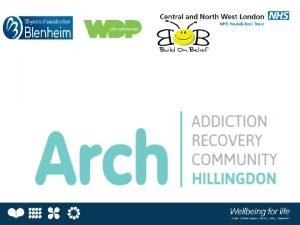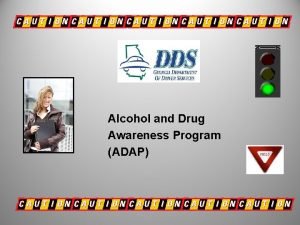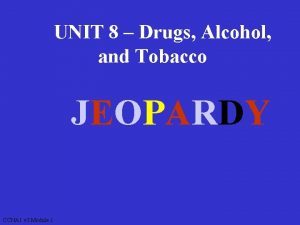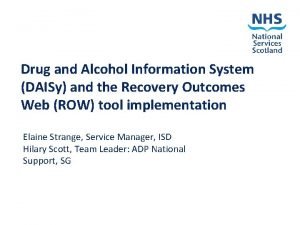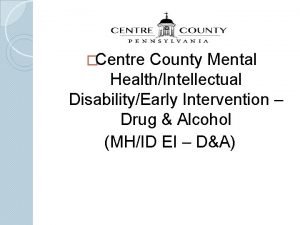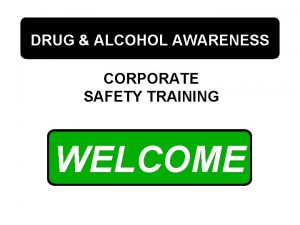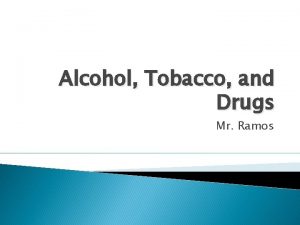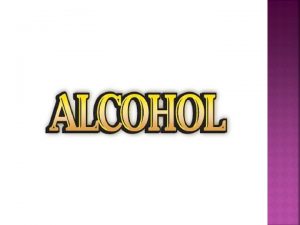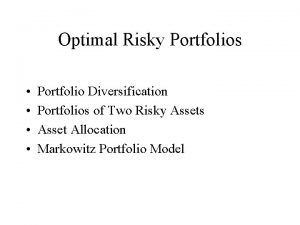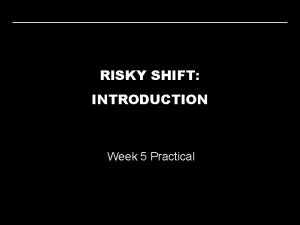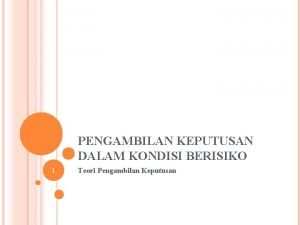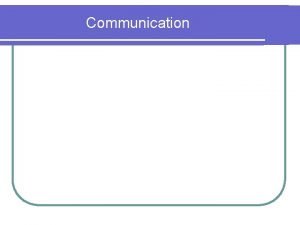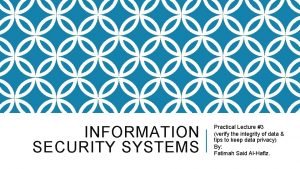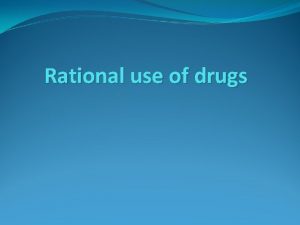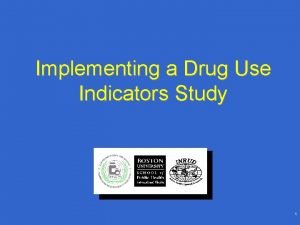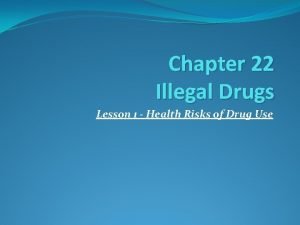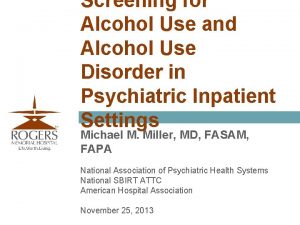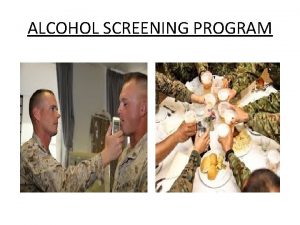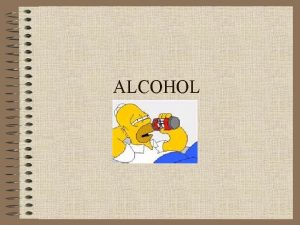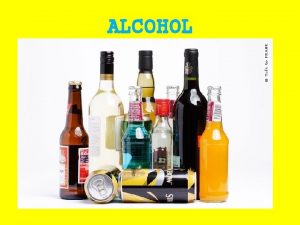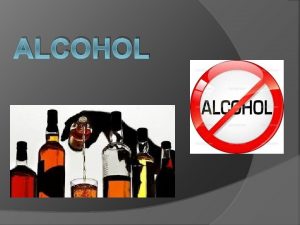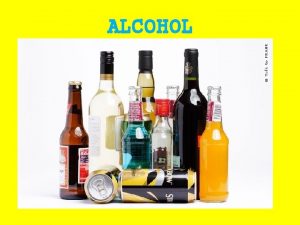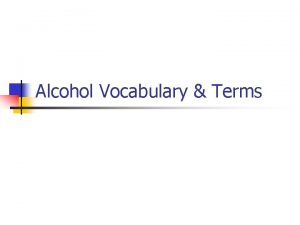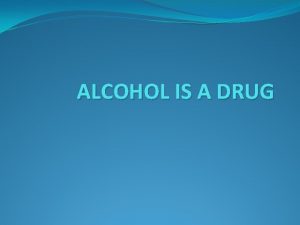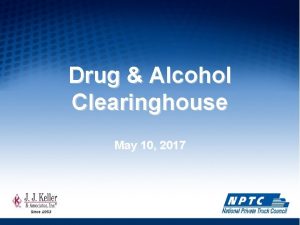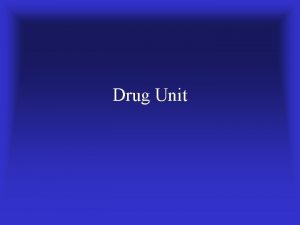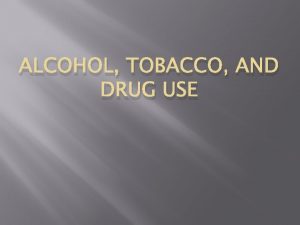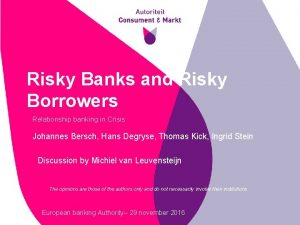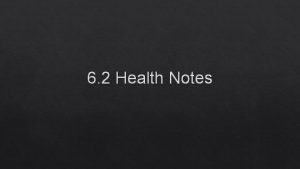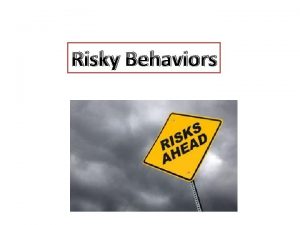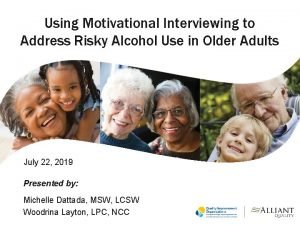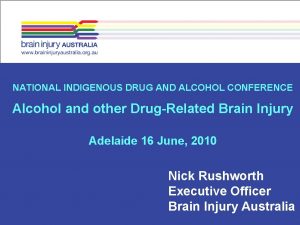Screening for Risky Alcohol and Drug Use Clinical





























- Slides: 29

Screening for Risky Alcohol and Drug Use Clinical and Implementation Issues Public Health/Traffic Safety Institute for Preventing Impaired Driving Thomas Babor, Ph. D, MPH

Objectives • Discuss alcohol/drug screening programs in relation to a public health approach to substance abuse • Review the WHO program on identification and management of substance-related problems in primary health care in context of the AUDIT and ASSIST screening tests. • Practice screening with AUDIT and ASSIST • Discuss implications for prevention of impaired driving

Spurt – a sudden burst of energy or activity A Brief History of SBIRT • Phase I (1980’s) Development of screening tests • Phase II (1985 -current) Clinical trials of brief intervention with risky drinkers and drug users • Phase III (1990 -current) Feasibility research on barriers to implementation of SBIRT • Phase IV (2000 -current) Development and evaluation of national plans for alcohol SBIRT program implementation in health care systems in both developed and developing countries

Key Terms and Definitions Dependence Syndrome Harmful Use Hazardous Use A cluster of cognitive, behavioral, and physiological symptoms A pattern of substance use that has already caused damage to health A pattern of substance use carrying with it a risk of harmful consequences to the user

The Drinkers’ Pyramid Dependent Drinkers At-Risk Drinkers Responsible Drinkers Abstainers

Illicit Drug Use Pyramid Connecticut Adults Age 18 to 39 3% (24, 912) Illicit drug abuse requiring formal treatment 14% (104, 653) Current illicit drug use 83% (619, 313) No illicit drug use Note: Figures based on Connecticut 1996 adult household telephone surveys and 2000 US census of adults age 18 to 39.

Goals of Screening • Identify both hazardous/harmful drinking or drug use and those likely to be dependent • Use as little patient/staff time as possible • Create a professional, helping atmosphere • Provide the patient information needed for an appropriate intervention

Identifying Hardcore Drunk Drivers • • Prior convictions BAC level Self-report screening tests Subtle screening tests

Common Self-Report Screening Assessments • Alcohol – AUDIT, CAGE, TWEAK, et. al. • Drugs – DAST • Combined Substances (Tobacco, Alcohol, Other Drugs) – ASSIST, CAGE-AID, SASSI

AUDIT Instrument • • Developed by WHO for international use Validated in many trials worldwide Distinguishes risk levels Not a diagnosis

Domains and Item Content of the AUDIT Domains Question Number Item Content Hazardous Alcohol Use 1 2 3 Frequency of drinking Typical quantity Frequency of heavy drinking Dependence Symptoms 4 5 6 Impaired control over drinking Increased salience of drinking Morning drinking Harmful Alcohol Use 7 8 9 10 Guilt after drinking Blackouts Alcohol-related injuries Others concerned about drinking

AUDIT Zones Risk Level Intervention Zone I Alcohol education AUDIT Score* 0 -7 Zone II Brief intervention 8 -15 Zone III Brief treatment 16 -19 Zone IV Referral to specialist for a diagnostic evaluation and more intensive treatment 20 -40

Sensitivity and Specificity of AUDIT Criterion Cut off Points Hazardous Consumption Abnormal Drinking Alcoholrelated problems Combined hazardous/ harmful use 8 97/78 96/81 95/85 92/94 10 92/87 90/90 86/92 80/98

ASSIST Instrument: Alcohol, Smoking and Substance Involvement Screening Test • Developed by WHO’s international group of researchers • 8 item instrument • Screens for health risks & problems associated with any psychoactive substance use • Provides lifetime and current (past 3 months) estimates of substance use and related risks

Domains of the ASSIST • • Lifetime use of up to 10 substance types Frequency of use (past 3 months) Desire or urge to use (past 3 months) Health, social, legal, financial problems (past 3 months) • Failure to fulfil role obligations (past 3 months) • Concern about substance use (lifetime, past 3 months) • Failed attempts to control use (past 3 months) • Injecting drug use (lifetime, past 3 months)

WHO ASSIST: Current Status • Findings to date indicate that the ASSIST is a valid screening instrument and has good concurrent, construct, predictive and discriminative validity • The ASSIST is able to discriminate between groups, particularly between use and abuse, and cut-off scores for abuse and dependence can also be determined • Ongoing RCT to link the ASSIST to a Brief Intervention in PHC settings in 7 countries


The Accuracy of Self- report Screening Tests Depends On: • The context (especially perceived threat) • The type of substance (e. g. , alcohol vs. heroin) • The degree of confidentiality • Perceived purpose of the questions • The procedure (questionnaire, interview, computer)

Patient Comfort with Screening (n=35, 257) % %

Patients’ Sense of Screening’s Importance to Providers (n=35, 033) % %

Percent At-Risk Drinkers Receiving Intervention by Provider & Specialist Models 76. 2% 57%

Factors influencing implementation of Cutting Back • Predisposing Factors – Stable patient membership – Organizational stability • Enabling Factors – Provider lack of time – Competing organizational priorities – Influential leadership – Staff involvement in planning – Technical assistance • Reinforcing Factors – Organizational Support

Other Sustainability Issues: Policies and Procedures • • Expert committee reports Standards and practices National alcohol screening day SBIRT National demonstration program

US Preventative Services Task Force Recommends that Primary Care Clinicians Screen and Counsel Adults to Prevent Misuse of Alcohol AHRQ, April, 2004 • Primary care clinicians should screen all adults and pregnant women for alcohol misuse and refer them for counseling if necessary • Women who drink more than 7 drinks per week or more than 3 drinks per occasion and men who drink more than 14 drinks per week or more than 4 drinks per occasion are considered to be risky or hazardous drinkers • The term alcohol misuse includes risky drinking as well as harmful drinking • Effective counseling sessions for risky drinkers should include advice to reduce current drinking; feedback about current drinking patterns; explicit goal-setting, usually for moderation; assistance in achieving the goal; and followup through telephone calls, repeat visits, and repeat monitoring.

Addressing Multiple Behavioral Health Risk Facrors in Primary Care: Broadening the Focus of Health Behavior Change Research and Practice A Robert Wood Johnson Foundation Initiative • The Big Four: – – Smoking Risky drinking Sedentary lifestyle Unhealthy diet • Review of epidemiological evidence • Summary of effective screening, intervention and systembased strategies • Recommendations for research, practice and policy Full Report: American Journal of Preventive Medicine, August, 27 (2 S), 2004

Standards and Practices • Insurance policy legislation can restrict or facilitate SBIRT • American College of Surgeons, Committee on Trauma, recommends new standards requiring Level 1 and level 2 trauma centers to "include identification and intervention for problem drinkers. "

National Alcohol Screening Day • The largest and most visible SBIRT activity in the USA • Established in 1999 • Three objectives: – Administer free and anonymous alcohol screening in an accessible setting – Provide referrals for treatment – Provide public education about the impact of alcohol on health

Reimbursement • Medicaid Will Reimburse for Alcohol, Drug Screening and Brief Intervention • Laurie Barclay, MD • Medscape Medical News 2006. © 2006 Medscape • September 13, 2006 — Effective January 2007, the US Centers for Medicare and Medicaid Services (CMS) will reimburse for alcohol and drug screening and brief intervention (SBI). Experts interviewed by Medscape hope that the new policy will help identify and treat people with substance use disorders, thereby improving public health.

Final Thoughts • Implementation models are inadequate to achieve adequate population reach • Screening is the linchpin of SBIRT • Carve out models may work better • Combine alcohol SBIRT with other risk factors
 Hillingdon arch
Hillingdon arch Alcohol and drug awareness program (adap) certificate
Alcohol and drug awareness program (adap) certificate 12 core functions of addiction counseling
12 core functions of addiction counseling Ccna drugs
Ccna drugs Drug and alcohol information system (daisy)
Drug and alcohol information system (daisy) Centre county drug and alcohol
Centre county drug and alcohol What effect might alcohol and another drug
What effect might alcohol and another drug Drug and alcohol safety training
Drug and alcohol safety training Primary alcohol vs secondary alcohol
Primary alcohol vs secondary alcohol Tertiary alcohol oxidation
Tertiary alcohol oxidation Concentration of alcohol
Concentration of alcohol Why is alcohol considered a drug
Why is alcohol considered a drug Different methods of adulteration of crude drugs
Different methods of adulteration of crude drugs Case diagram in software engineering
Case diagram in software engineering Novel clinical drug trial design
Novel clinical drug trial design What is the wind's role in the navajo ceremony
What is the wind's role in the navajo ceremony Capital allocation between risky and risk free asset
Capital allocation between risky and risk free asset Optimal portfolio formula
Optimal portfolio formula Ims
Ims The risky shift
The risky shift Risky adventure sports
Risky adventure sports Risky curves clothing
Risky curves clothing Pengertian pengambilan keputusan dalam kondisi beresiko
Pengertian pengambilan keputusan dalam kondisi beresiko Risky behaviour defination
Risky behaviour defination Lab – discover your own risky online behavior
Lab – discover your own risky online behavior Risky sports
Risky sports What shape is the utility of a risk-averse investor?
What shape is the utility of a risk-averse investor? 9 rational use of drugs
9 rational use of drugs Drug use indicators definition
Drug use indicators definition Chapter 22 lesson 1 health
Chapter 22 lesson 1 health
